🌍 Cultural Sociology: Essential Concepts for Reading Comprehension
Cultural sociology examines how culture shapes human behavior, beliefs, and societal structures. It explores the shared norms, values, and practices that define communities while analyzing the interplay between tradition, globalization, and social change. RC passages on cultural sociology often delve into the dynamics of cultural diversity, power structures, and the tension between tradition and modernity. Understanding these concepts equips readers to critically engage with societal trends and cultural phenomena.
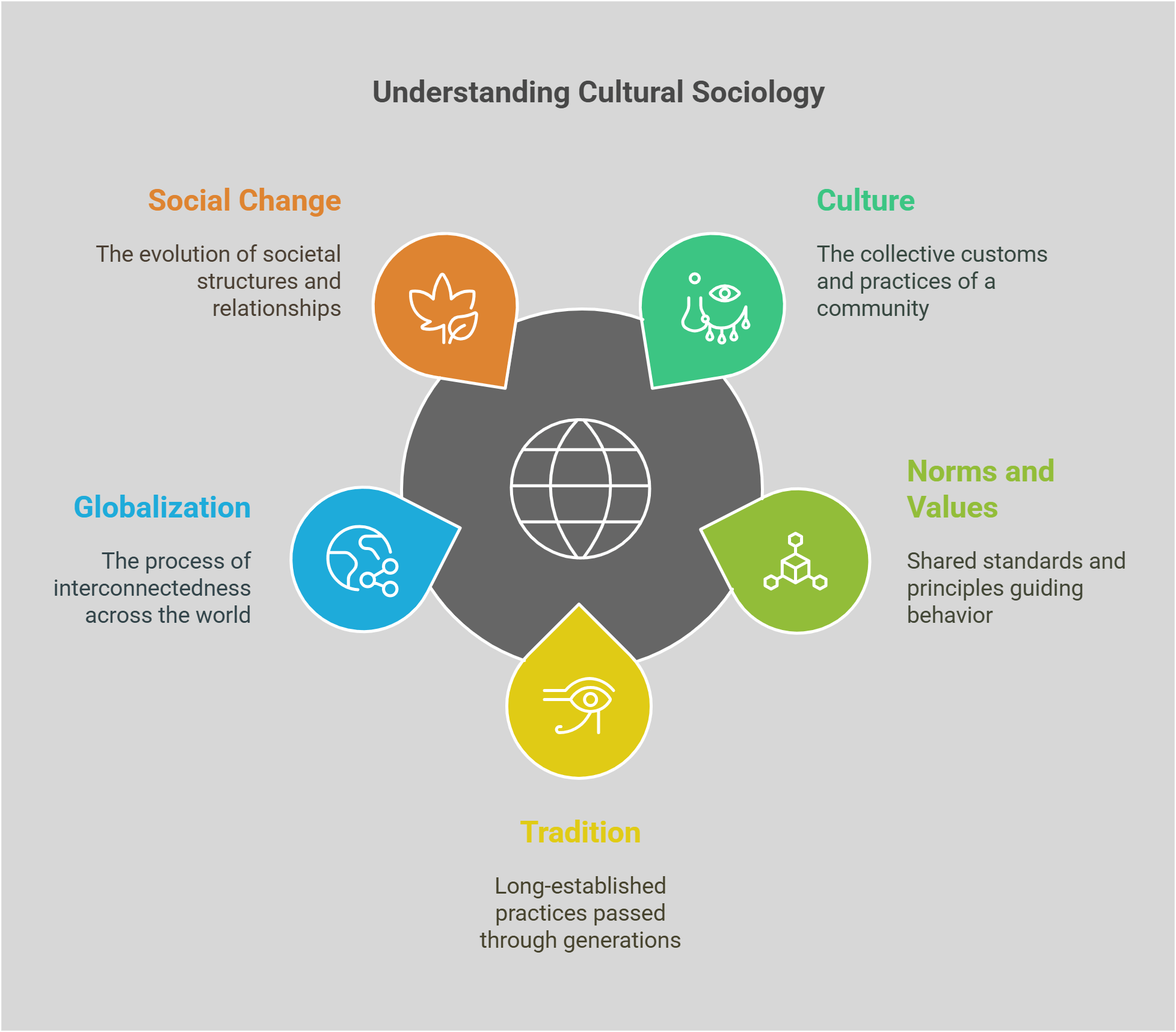
📋 Overview
This guide explores the following essential cultural sociology concepts:
- High Culture vs. Popular Culture
- Subcultures
- Cultural Relativism
- Cultural Appropriation
- Globalization and Culture
- Material vs. Non-Material Culture
- Ethnocentrism
- Multiculturalism
- Norms and Values
- Cultural Hegemony
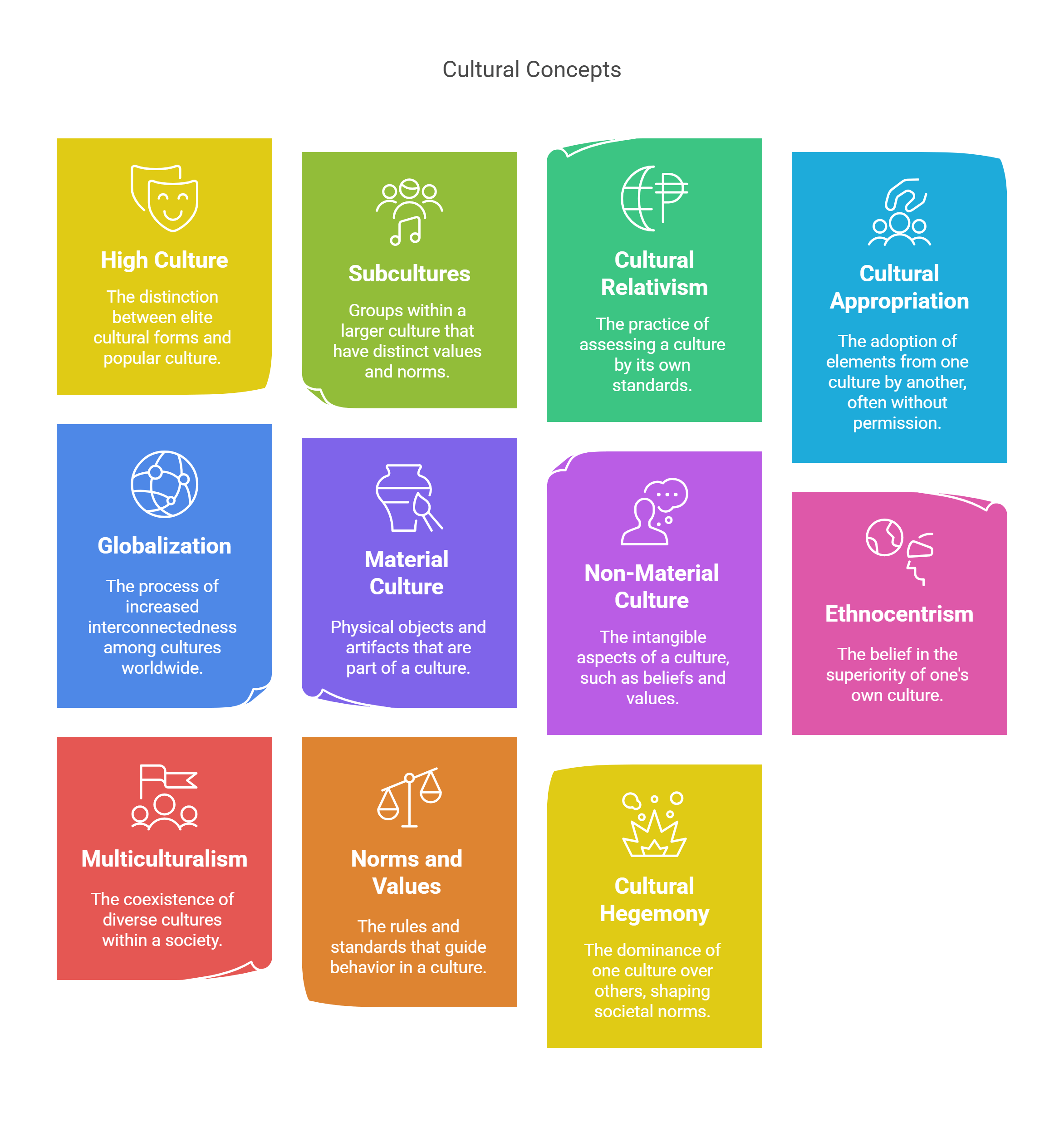
🔍 Detailed Explanations
1. High Culture vs. Popular Culture
High culture refers to the elite, refined artistic and intellectual achievements of society, such as classical music, fine art, and literature. In contrast, popular culture encompasses mainstream entertainment, trends, and practices embraced by the broader public.
- Key Features:
- High Culture: Associated with exclusivity and prestige; typically requires education or wealth for appreciation.
- Popular Culture: Reflects mass appeal, often accessible and rooted in everyday life.
- Applications:
- Analyzing the class-based divide in cultural consumption.
- Exploring how technology bridges gaps between high and popular culture.
📘 Example: Attending an opera is considered high culture, while enjoying a blockbuster movie is part of popular culture.
Explained Simply: High culture is like a gourmet meal, while popular culture is like fast food—both serve different tastes and contexts.
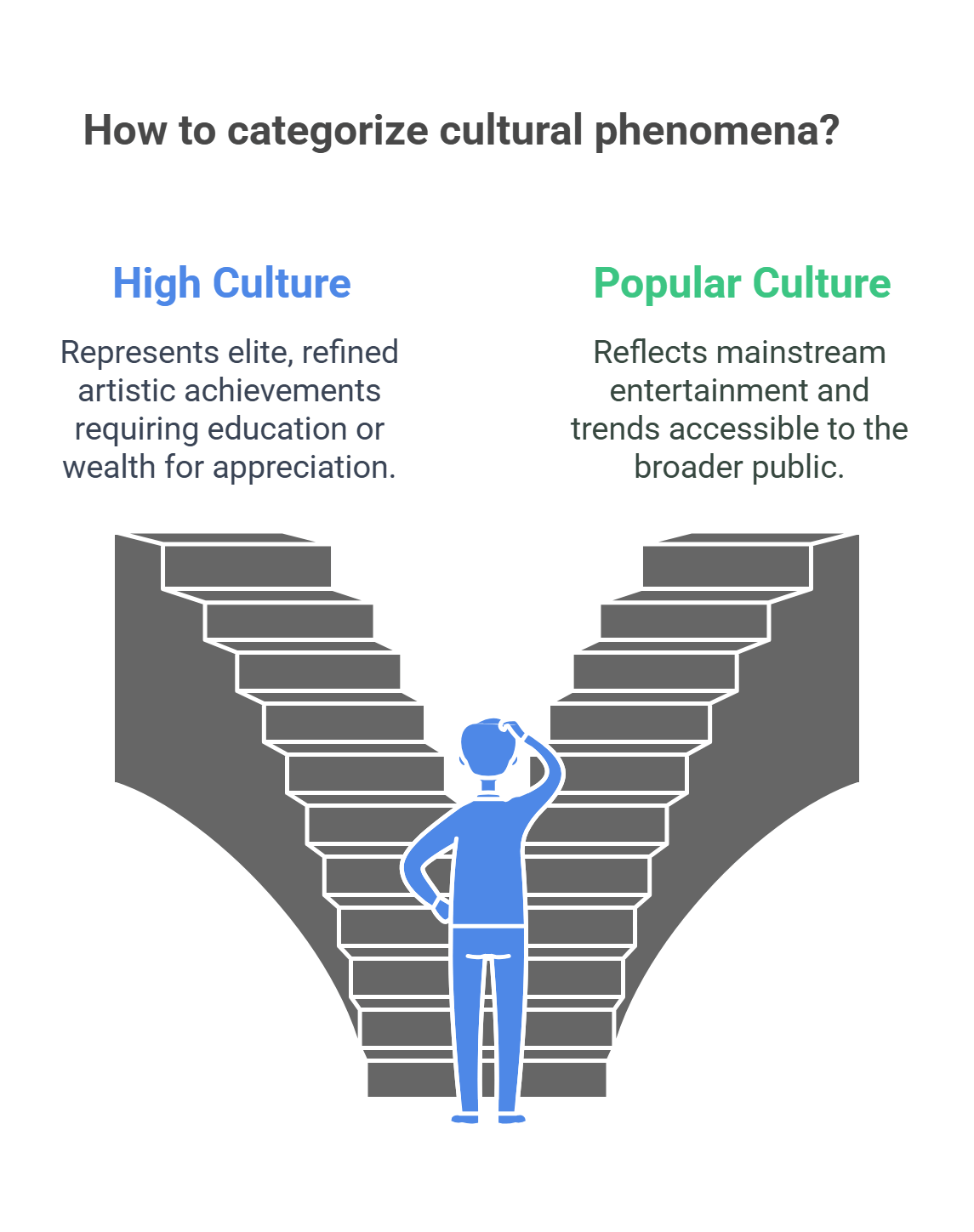
2. Subcultures
Subcultures are distinct cultural groups within a larger society that maintain unique values, norms, and practices. While they coexist with the dominant culture, subcultures often provide a sense of identity and belonging to their members.
- Key Characteristics:
- Defined by music, fashion, language, or shared interests.
- Often challenge mainstream norms or reinforce alternative lifestyles.
- Examples:
- Punk culture, characterized by its rebellious attitude and music.
- Gamer communities, united by their passion for video games.
Explained Simply: Subcultures are like neighborhoods within a city, each with its unique vibe and traditions.
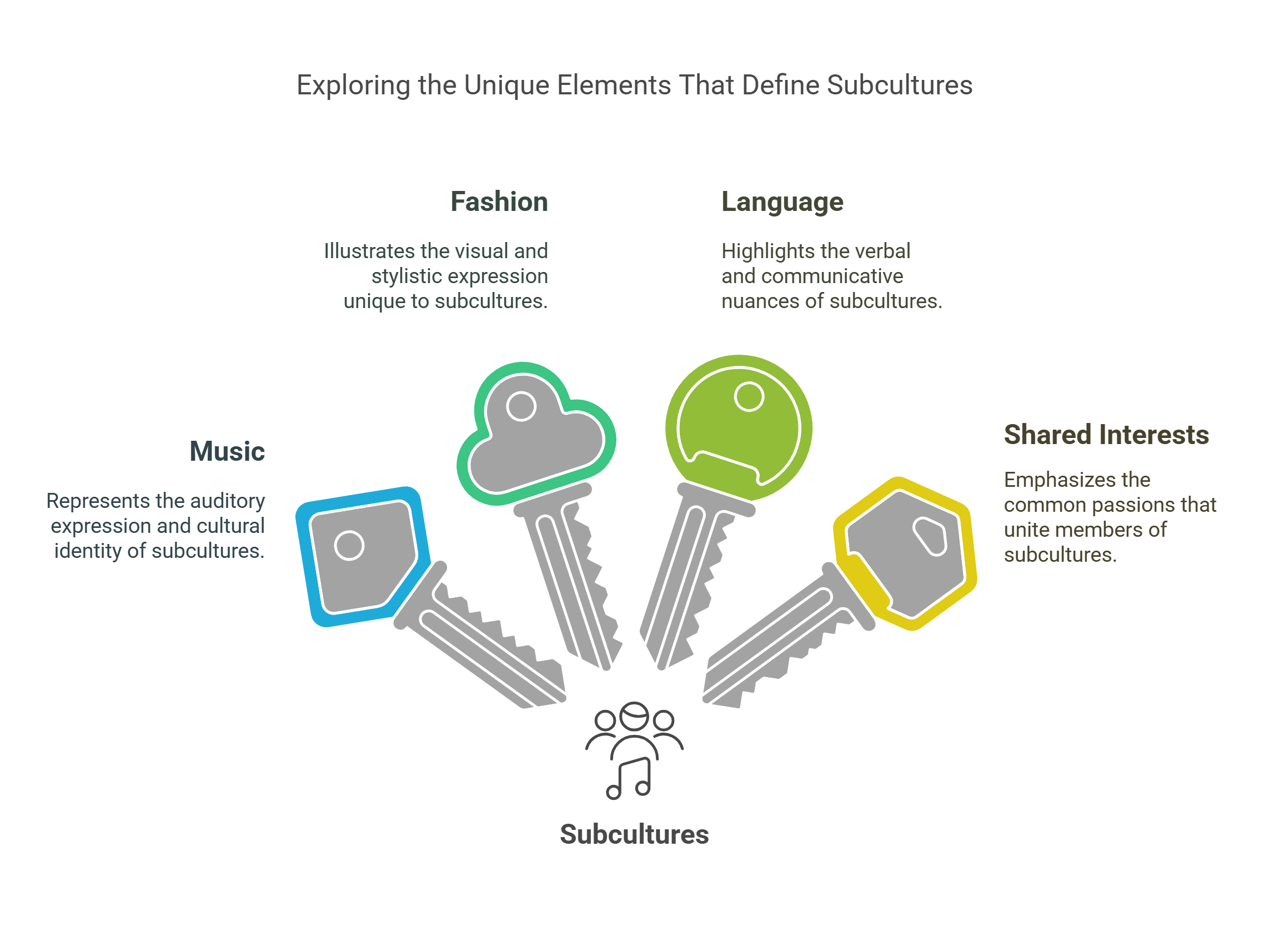
3. Cultural Relativism
Cultural relativism is the principle of understanding and evaluating cultural practices within their own context rather than through the lens of one’s own culture. It promotes tolerance and reduces ethnocentric judgments.
- Key Insights:
- Avoids imposing external standards on different cultures.
- Encourages empathy and cross-cultural understanding.
- Applications:
- Anthropologists use cultural relativism to study practices like rituals or social norms without bias.
📘 Example: Viewing dietary restrictions in various religions as meaningful traditions rather than strange or irrational.
Explained Simply: Cultural relativism is like trying on someone else’s glasses to see the world from their perspective.
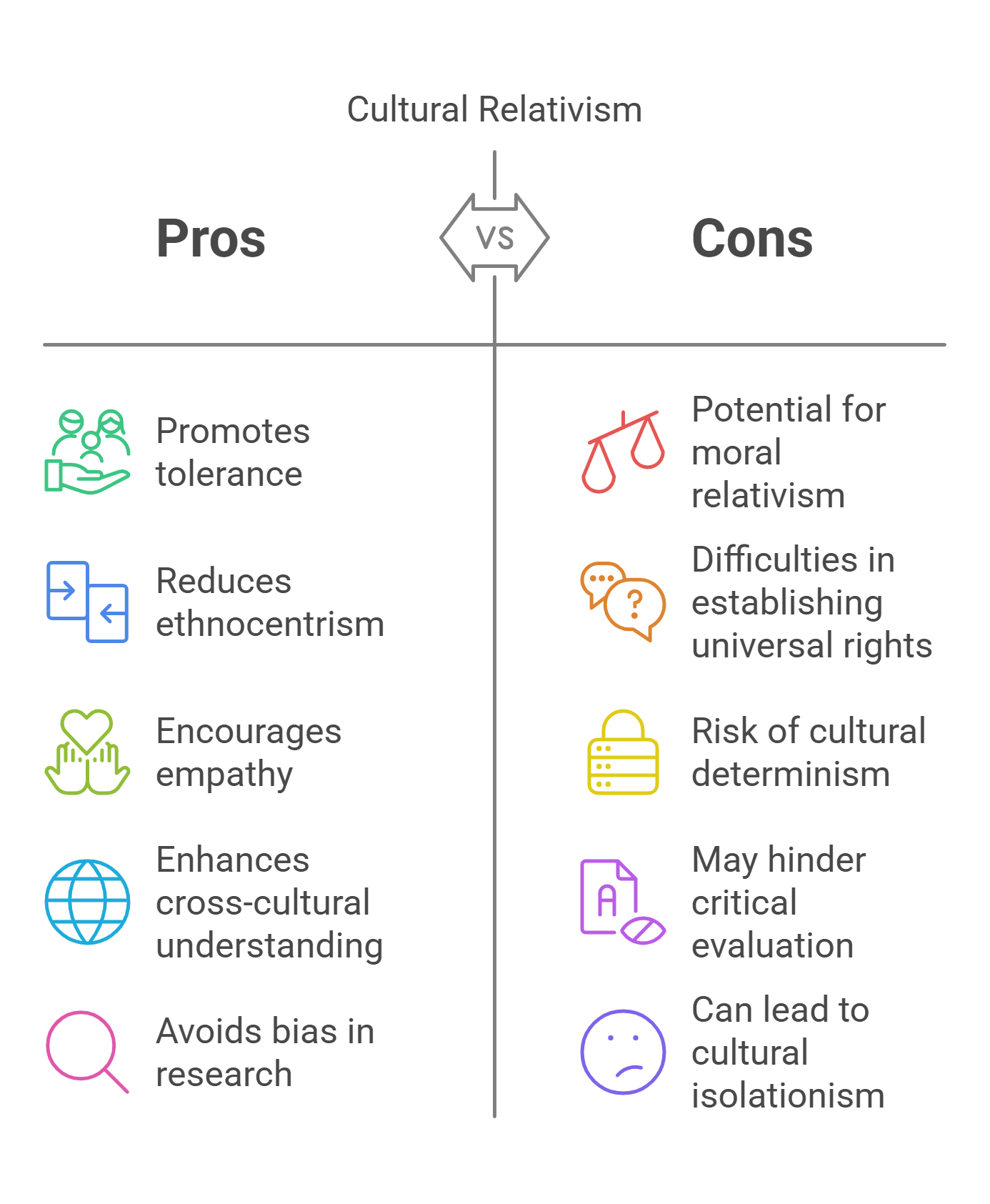
4. Cultural Appropriation
Cultural appropriation occurs when elements of one culture, particularly those of marginalized groups, are adopted or used by another, often without understanding or respect. This practice can perpetuate stereotypes or exploit cultural symbols for profit.
- Key Issues:
- Power dynamics: Often involves dominant cultures taking from minority groups.
- Misrepresentation: Strips cultural elements of their original significance.
- Examples:
- Using Native American headdresses as fashion accessories.
- Commercializing traditional African patterns without crediting their origins.
Explained Simply: Cultural appropriation is like borrowing a book without reading or acknowledging its meaning.
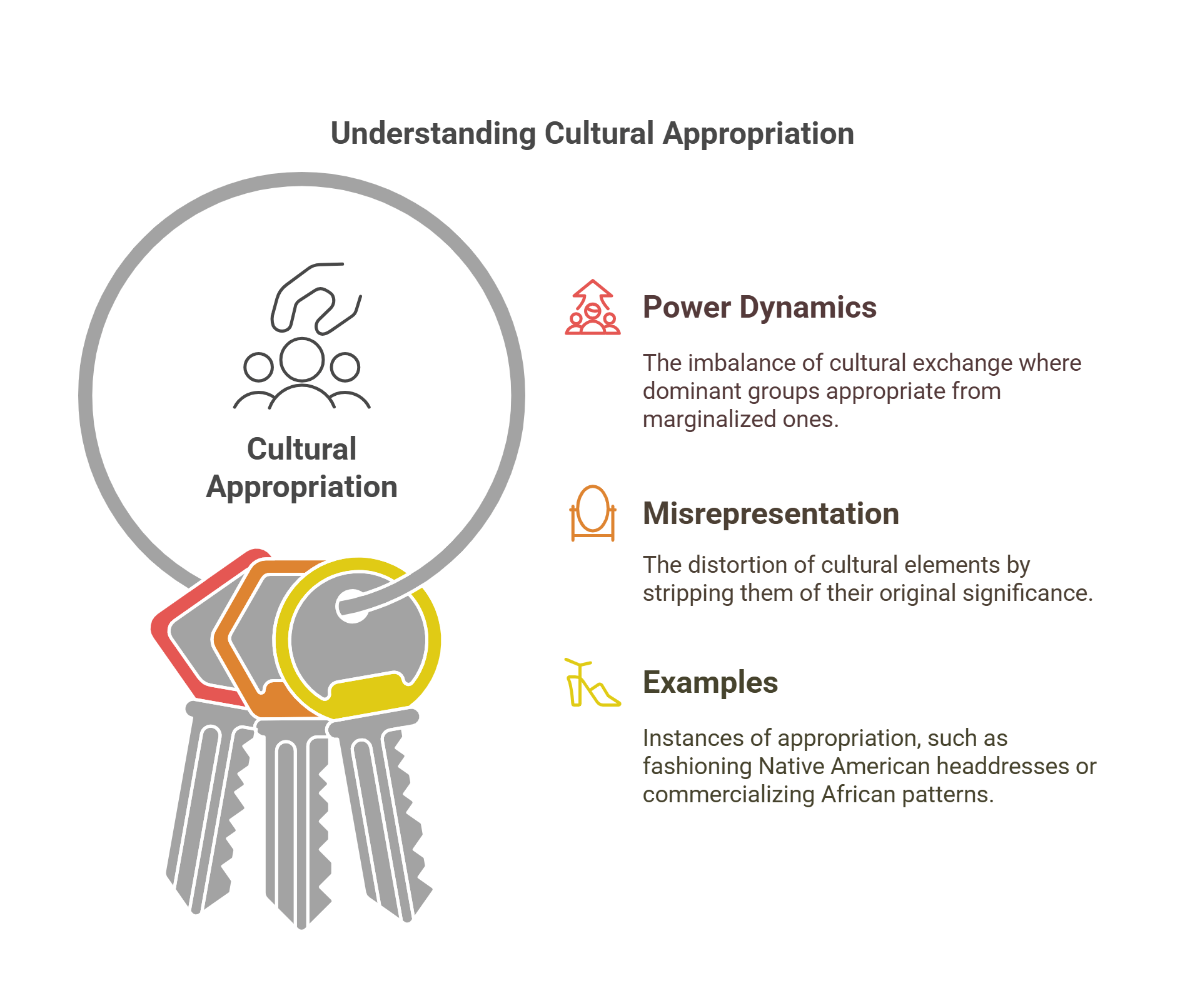
5. Globalization and Culture
Globalization refers to the increasing interconnectedness of cultures through technology, trade, and communication. While it fosters cultural exchange, it also raises concerns about cultural homogenization and the loss of local traditions.
- Key Effects:
- Cultural Hybridization: Fusion of global and local cultural elements.
- Cultural Imperialism: Dominance of one culture, often Western, over others.
- Applications:
- Examining how global media influences local customs.
- Understanding resistance movements preserving cultural heritage.
📘 Example: The global spread of fast-food chains alongside the adaptation of local flavors in their menus.
Explained Simply: Globalization is like a cultural blender, mixing traditions while risking the loss of unique flavors.
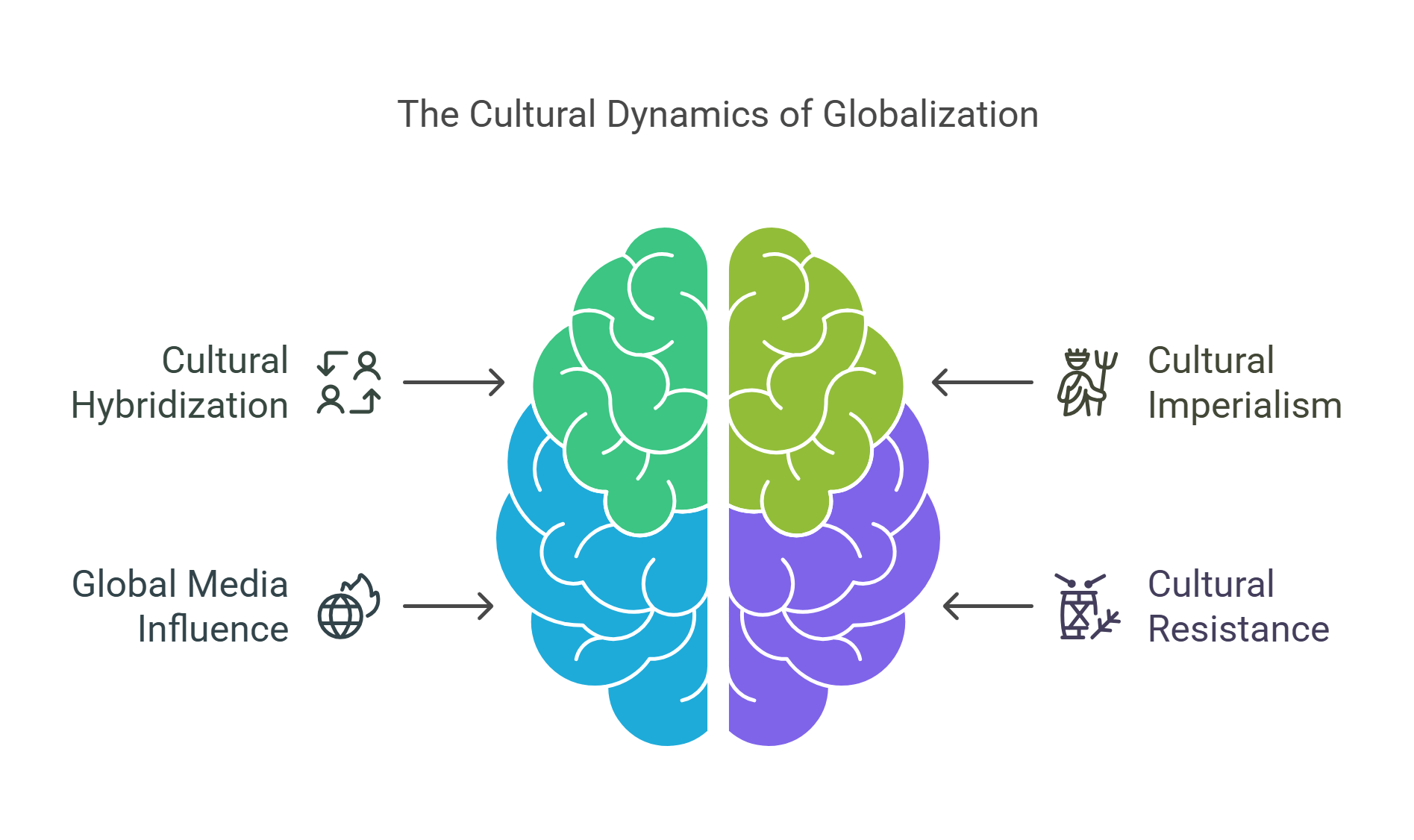
6. Material vs. Non-Material Culture
Culture can be categorized into material and non-material components:
- Material Culture: Tangible objects, such as architecture, technology, and clothing.
- Non-Material Culture: Intangible elements, such as beliefs, values, and customs.
Applications:
- Understanding how artifacts reflect societal values.
- Analyzing how non-material culture shapes social interactions.
📘 Example: Smartphones (material) symbolize connectivity and innovation (non-material).
Explained Simply: Material culture is what we create; non-material culture is what we believe.
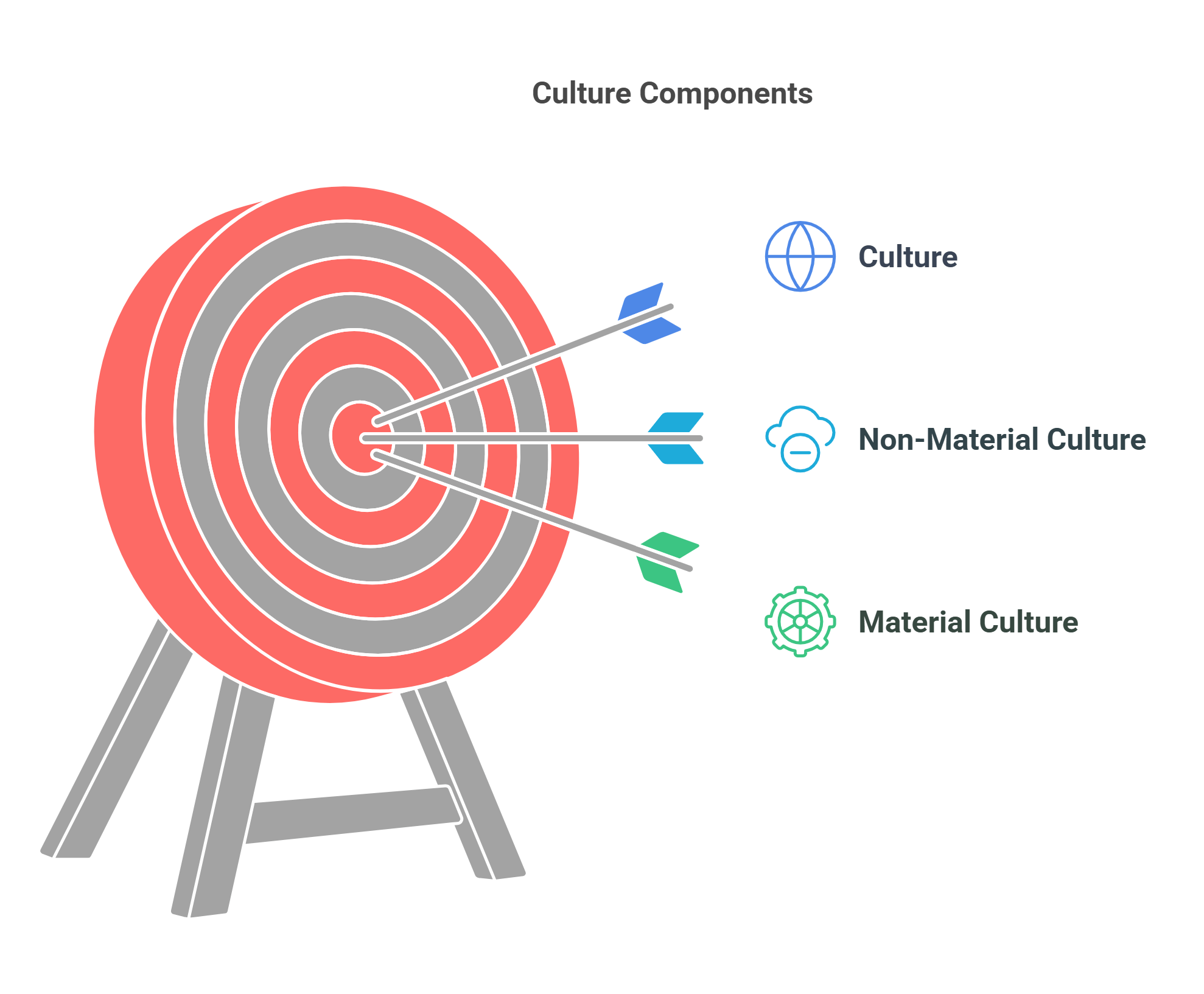
7. Ethnocentrism
Ethnocentrism is the tendency to view one’s own culture as superior while judging others based on one’s cultural norms. It often leads to misunderstandings and conflicts.
- Key Impacts:
- Reinforces cultural pride but hinders cross-cultural understanding.
- Fuels prejudice and discrimination.
- Applications:
- Addressing ethnocentric attitudes through education and dialogue.
📘 Example: Criticizing another culture’s traditions without understanding their historical or social significance.
Explained Simply: Ethnocentrism is like looking at the world through a distorted mirror, magnifying your own culture while minimizing others.
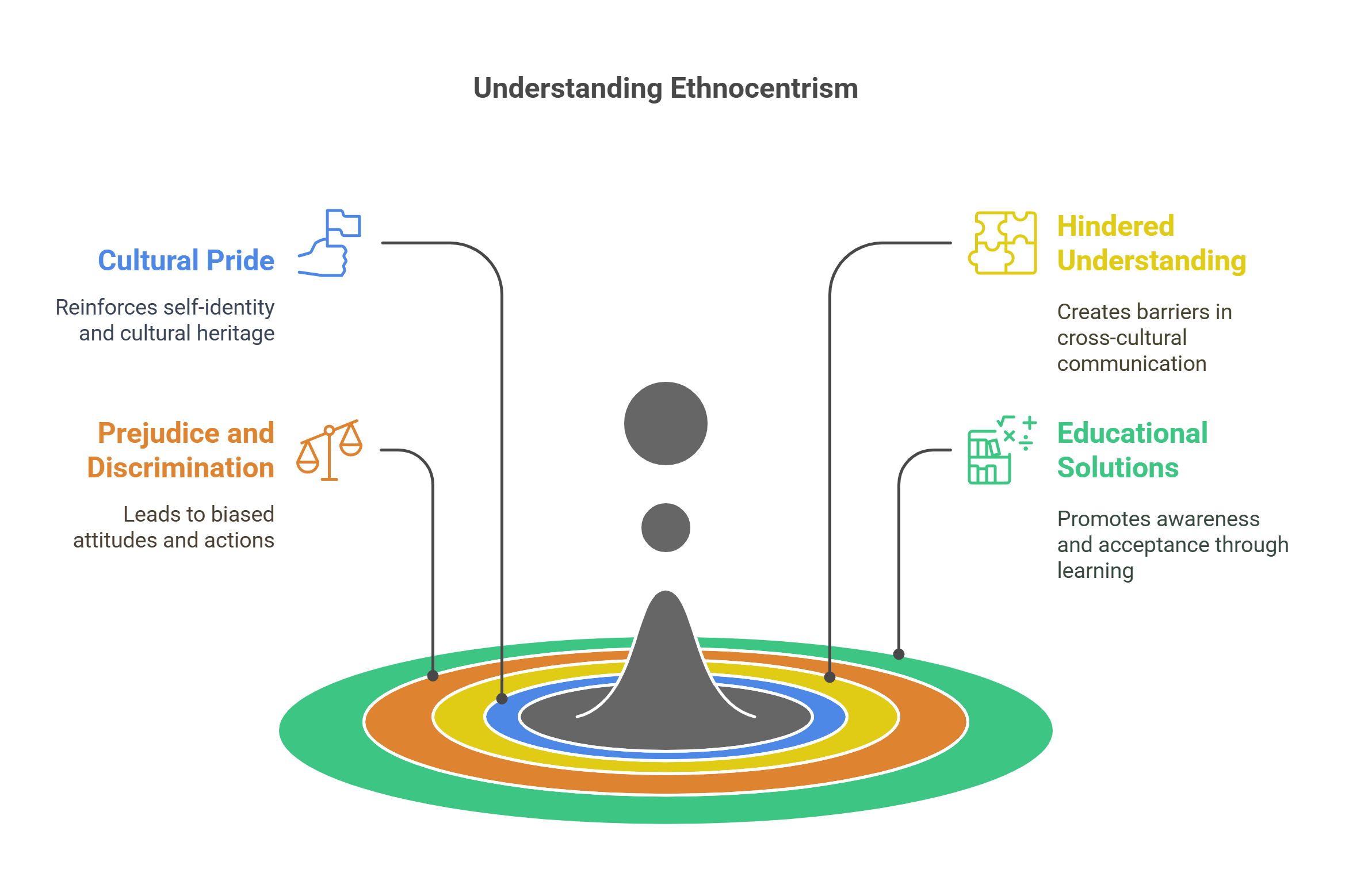
8. Multiculturalism
Multiculturalism celebrates the coexistence of diverse cultures within a society, emphasizing respect, inclusion, and equality.
- Key Principles:
- Advocates for cultural pluralism rather than assimilation.
- Promotes intercultural dialogue and shared societal contributions.
- Applications:
- Policies supporting bilingual education and cultural festivals.
📘 Example: Canada’s multicultural policies encouraging the preservation of immigrant cultures.
Explained Simply: Multiculturalism is like a mosaic, where each piece retains its individuality while contributing to a larger picture.
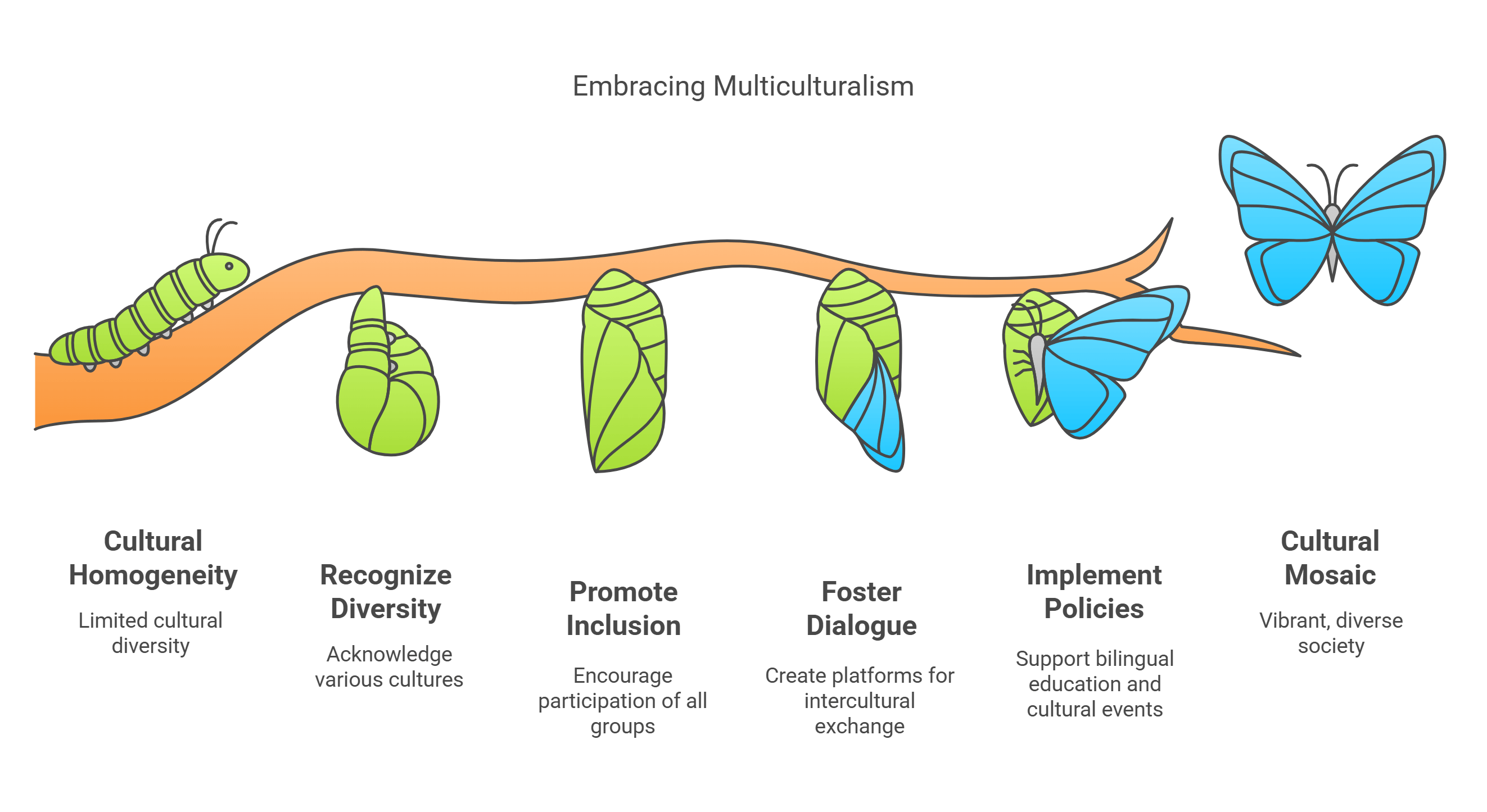
9. Norms and Values
Norms are shared rules or expectations guiding behavior, while values are the underlying beliefs that shape those norms. Together, they create a framework for societal conduct.
- Types of Norms:
- Folkways: Everyday customs (e.g., table manners).
- Mores: Strongly held norms with moral significance (e.g., laws against theft).
- Taboos: Prohibitions against deeply unacceptable behaviors (e.g., incest).
- Applications:
- Understanding cultural differences in social etiquette or legal systems.
📘 Example: Values of honesty underpin norms against lying.
Explained Simply: Norms are like traffic rules, and values are the principles that justify them.
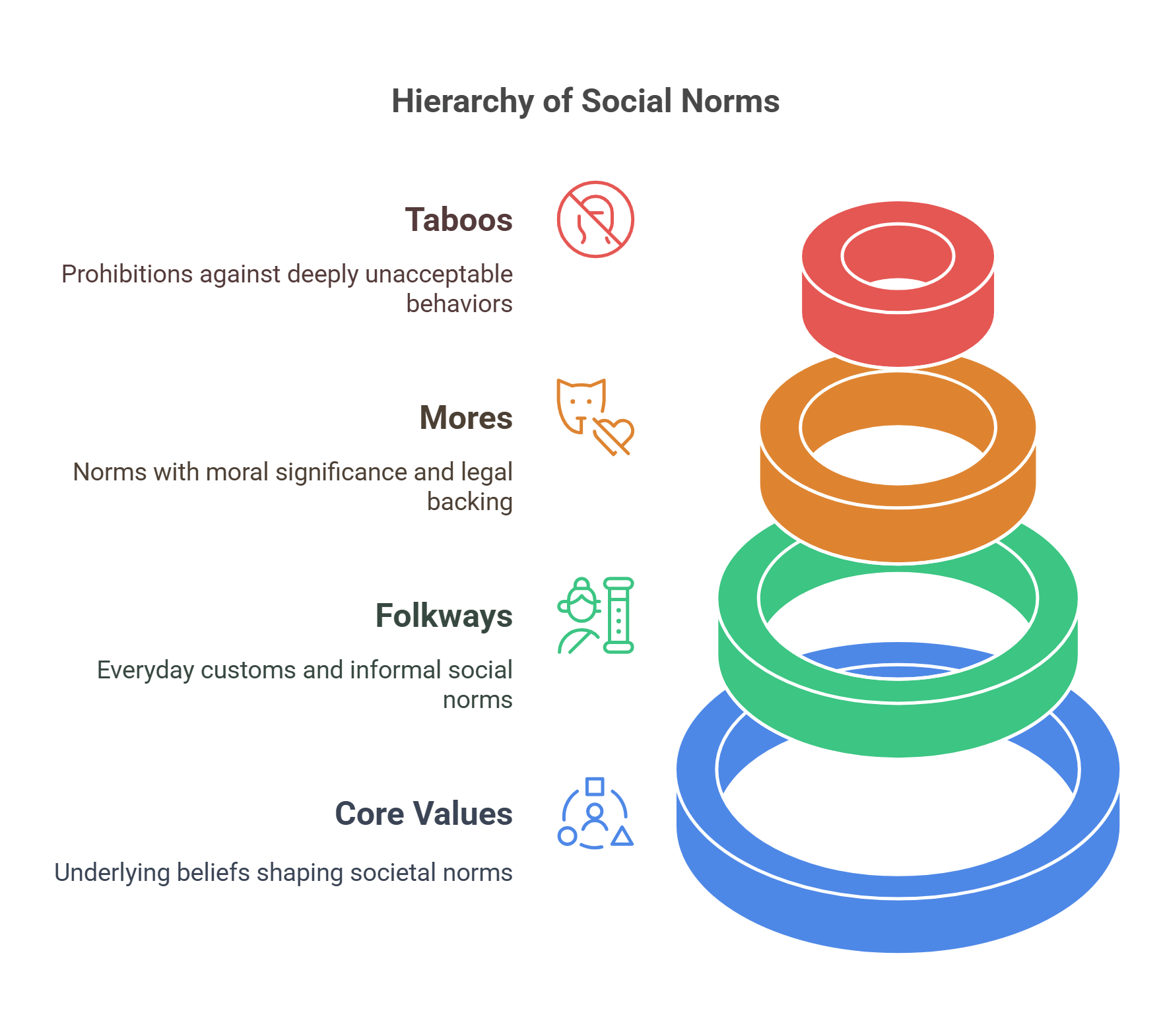
10. Cultural Hegemony
Coined by Antonio Gramsci, cultural hegemony describes how dominant groups maintain control by shaping cultural norms and ideologies, making their values seem universal and natural.
- Key Insights:
- Influences societal beliefs, media, and education.
- Often resists change by suppressing alternative perspectives.
- Applications:
- Analyzing media’s role in reinforcing consumerism or political ideologies.
📘 Example: The global dominance of Western ideals of beauty through advertising.
Explained Simply: Cultural hegemony is like a script written by the powerful, directing how society thinks and acts.
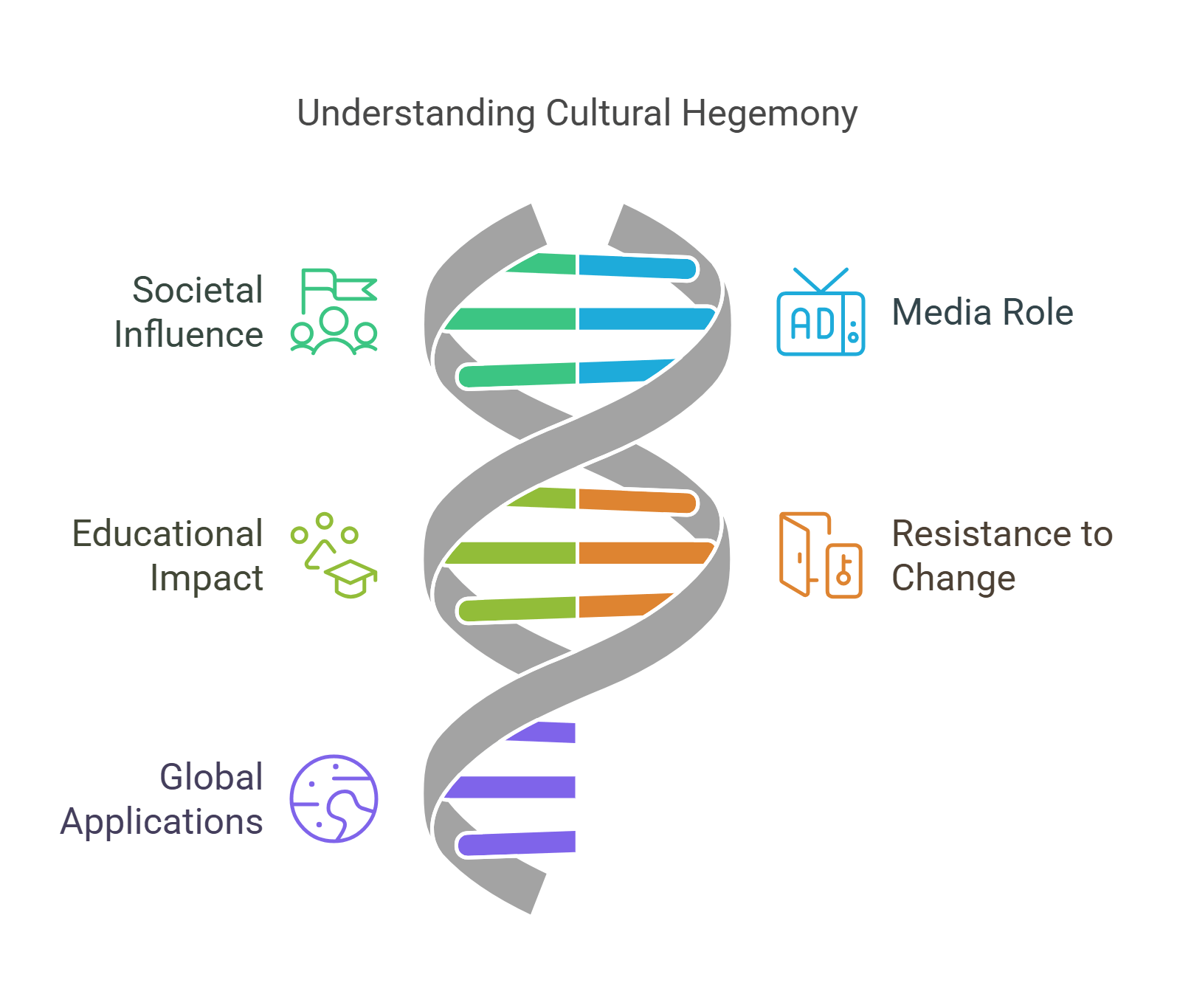
✨ Conclusion
Cultural sociology unpacks the rich tapestry of human traditions, beliefs, and practices. By understanding concepts like cultural relativism, norms and values, and globalization, readers can critically analyze RC passages and explore the complexities of cultural dynamics. This field reveals how culture shapes societies while highlighting the importance of diversity and mutual respect in an interconnected world.










